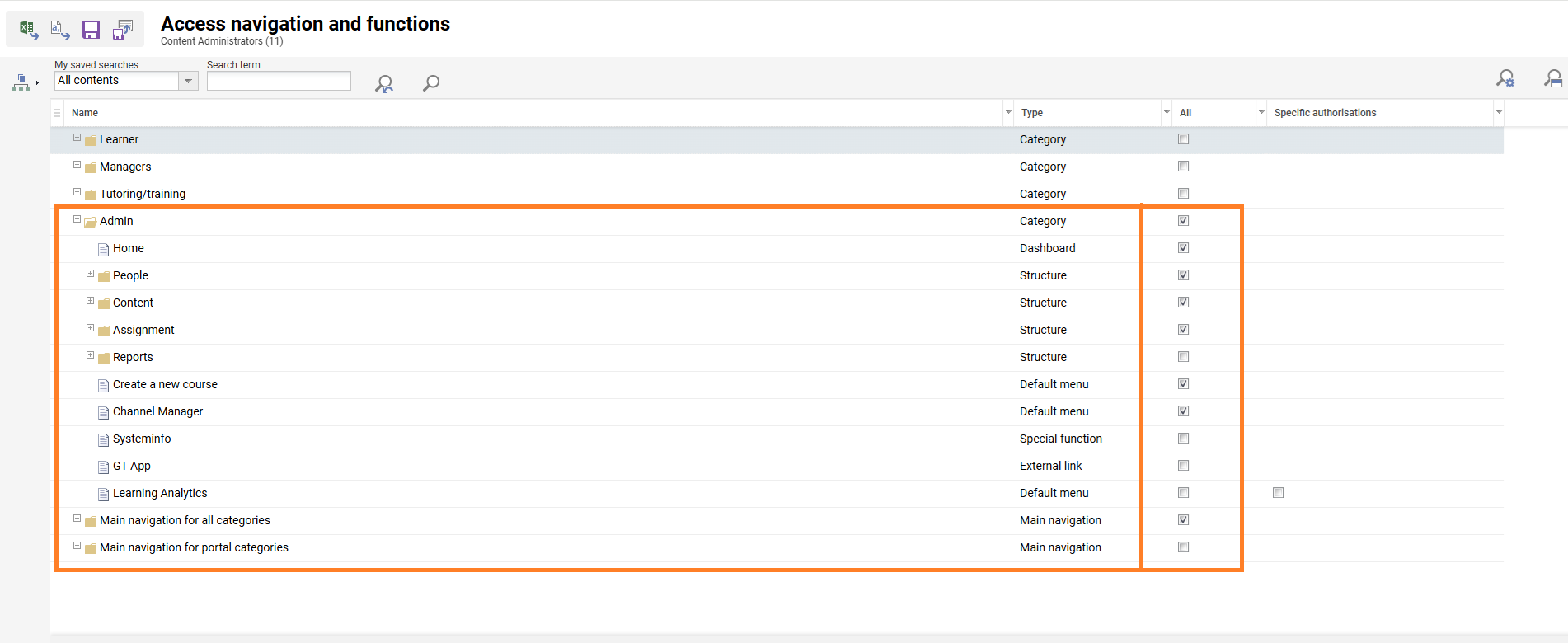Administrator Role
The Administrator roles can vary quite a lot in the imc Learning Suite as any number of administrator roles can be created with specific access rights configured. The most common type of administrator roles would be content and course administrators who are responsible for creating training content and courses, assigning training to catalogues, enrolling users to training and generating various reports. Out of the box the imc Learning Suite comes pre-configured with the following administrator roles:
Content administrator: Access to functions to create or manage users and trainings
System administrator: Access to all training functions and objects as well as global configuration settings for functions for updating users, groups, training master templates, system wordings, emails, dashboards, navigation, reports and much more.
Additional roles can be created in the "Organisational structure and groups" function by creating a new "system" group then selecting the group function (e.g. HR, Moderator, Mentor...), providing functional access via the "Access navigation and functions" icon, providing default clearance to objects via the "Configuration / Clearances" menu, and finally updating registration rules to provide clearance to required users. When creating new roles it may also be required to manually provide the new role clearances on existing objects they will need to access such as reports, course types, media type etc.
Standard Administrator Roles
The imc Learning Suite comes pre-configured with three standard administrator roles which are a Content Administrator (ID 11) for creating content, a System Administrator (ID 1) for creating all objects, and a Super Administrator that can perform all functions including managing system wide configurations. Users assigned to any to any role-based group with navigation access rights to a “Managers”, “Tutoring/training”, “Admin” or “Settings” category menu should have access to the “Role switch” icon; if they do not see the icon then the role likely needs access rights to the “Main navigation for all categories → Categories switch” category and special function.

Content Administrator
The Content Administrator role is pre-configured to allow creation of courses, learning paths and learning objects (e.g. Media, Tests, Feedback forms); as well as being selectable as course and/or learning path administrators to administrate enrolments. Other enabled responsibilities are training catalogue management and reporting. This group will have clearance to the standard course types, learning path types, media types, standard catalogue, and various standard reports to perform day to day training administration duties. Generally, a larger number of users will be assigned as Content Administrators.

System Administrator
The System Administrator role is pre-configured to be able to perform a wide range of responsibilities including training creation, training administration, training workflow configuration, user management, group management, dashboard management, system wording configuration, reporting, and many other configurations. This group will automatically receive full clearance to all objects via “Configuration → Clearance” rules and users via business rules. Generally, a smaller number of users would be assigned this role given the ability to change many important global settings such as dashboards and notifications.
Super Administrator
The Super Administrator role automatically has full access to every function and object in the system without any specific configurations of navigation or business rules needed. The key difference compared with the System Administrator role is that Super Administrators have access to the functions in the “Settings → System Platform Management” folder that contain many technical configuration settings. Generally, a very limited number (1-3) of trained technical users would be assigned to this role given the absolute power.
